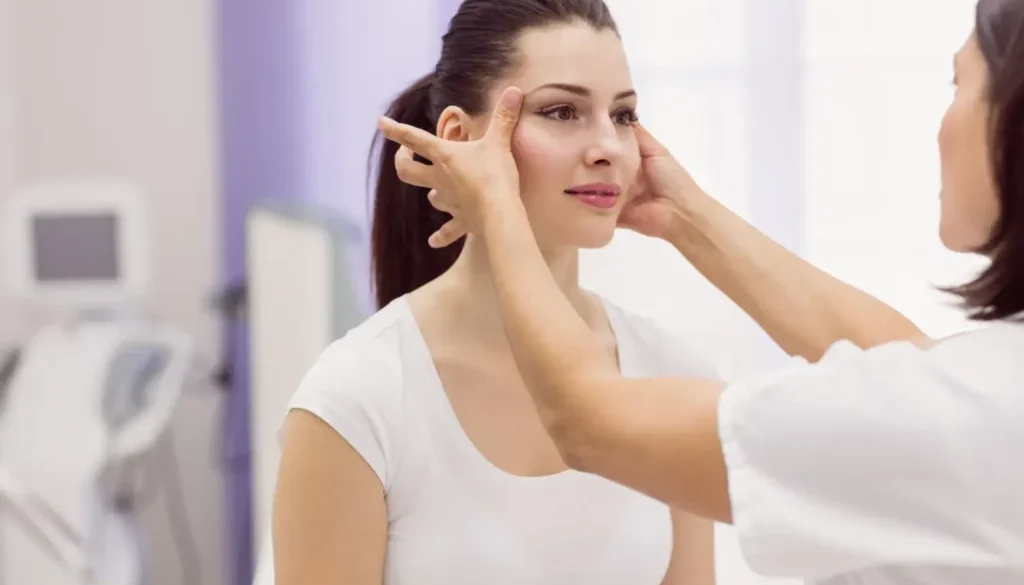Melasma Treatment In Dubai
All About Melasma: Identifying, Managing, and Treating This Common Skin Condition
Have you noticed uneven patches of brown or greyish discolouration on your face, particularly on your cheeks, forehead, chin, or upper lip? You might be dealing with melasma, a common skin condition that affects millions worldwide. But what exactly is it, and how can you manage it? Discover effective melasma treatment in Dubai at Lifeline Clinic, led by Dr. S.M.S Pillai, a seasoned dermatologist with 35 years of expertise. We specialize in addressing various skin diseases, including dark patches. Find personalized care and effective solutions right near you.
What is Melasma?
Melasma, alternatively known as chloasma or the “mask of pregnancy,” manifests as patches of darkened skin. These dark patches on skin are usually brown, tan, or blue-grey and mostly appear on the face but can also appear on other sun-exposed body areas. Moreover melasma predominantly affects women, particularly those with darker skin tones, and often occurs during hormonal changes like pregnancy.
Types of Melasma
There are three main types of melasma :
- Epidermal Melasma: This type affects the upper layer of the skin (epidermis) and appears as light brown patches.
- Dermal Melasma: This type affects the deeper layer of the skin (dermis) and appears as deeper brown or greyish patches.
- Mixed Melasma: This is the most common type, affecting both the epidermis and dermis, resulting in a combination of light and dark brown patches on skin.
Symptoms of Melasma
The primary symptom of melasma is the development of brown, tan, or greyish patches on the face. These patches are usually:
- Symmetrical in nature, melasma tends to appear on both sides of the face.
- Irregular in shape
- Sharply defined borders
- Found on areas frequently exposed to the sun, such as the cheeks, forehead, bridge of the nose, chin, and upper lip
Causes of Melasma
The precise cause of melasma remains largely unclear, however, various factors are recognized for triggering or exacerbating the condition:
- Sun Exposure: Exposure to sunlight’s ultraviolet (UV) radiation can activate melanocytes, the cells responsible for producing pigment, thereby contributing to the development of melasma.
- Genetic Predisposition: A family history of melasma can increase the likelihood of developing the condition.
- Skin Type: Individuals with deeper skin tones are more susceptible to melasma due to their higher melanocyte activity.
- Certain Medications and Cosmetics: Some medications and skin care products can cause photosensitivity, increasing the risk of melasma when exposed to sunlight.
Diagnosis of Melasma
A dermatologist can diagnose melasma through a physical examination of your skin. They might also use a wood’s lamp, which emits a particular type of ultraviolet light that can help differentiate melasma from other skin diseases. Sometimes, a skin biopsy might be recommended by dermatologist to rule out other causes of pigmentation.
Treatment of Melasma
There is no cure for melasma treatment , however, numerous treatment options exist in Dubai to aid in managing and enhancing the appearance of the patches. These include:
- Sunscreen: It’s vital to apply sunscreen every day to prevent additional darkening and shield your skin from UV harm.
- Skin lightening creams: Topical creams containing ingredients like hydroquinone, kojic acid, azelaic acid, or licorice extract can help lighten the patches.
- Chemical peels: These treatments involve applying a chemical solution to eliminate the outer layer of skin, which promoting the growth of new, lighter skin cells.
- Laser treatment: Specific lasers can target melanin-producing cells and improve the appearance of melasma.
- Light therapy: Intense pulsed light (IPL) therapy can be used to lighten pigmentation.
Risk Factors for Melasma
Several factors increase your risk of developing melasma:
- Female gender: Women are more prone to melasma than men.
- Skin type: Individuals with deeper skin tones are more prone to developing melasma.
- Family history: Having a close relative with melasma increases your risk.
- Sun exposure: Living in sunny climates or spending significant time outdoors without sun protection increases the risk.
Melasma is a common skin condition, but it doesn’t have to define your confidence. Understanding the causes and treatment options in Dubai allows you to control and manage your melasma effectively. Therefore seeking guidance from a dermatologist is essential for an accurate diagnosis of skin diseases and tailored treatment strategy. Hence with consistent care and sun protection, you can achieve a clearer, even-toned complexion.
Frequently Asked Questions
Is melasma contagious?
- No, melasma is not contagious. It cannot be spread from person to person through physical contact.
Does pregnancy always cause melasma?
- Not all pregnant women will develop melasma. Nonetheless, hormonal fluctuations during pregnancy can elevate the risk for those with a predisposition.
Can melasma reoccur after treatment?
- Yes, melasma can reoccur, especially if sun protection measures are not maintained.
Is melasma related to other skin conditions?
- Melasma is primarily a standalone condition but can sometimes be confused with other pigmentation disorders, such as hyperpigmentation or post-inflammatory hyperpigmentation.
How long does it take to see improvement with treatment?
- Improvement can be seen within a few months of consistent treatment, but it varies from person to person.




